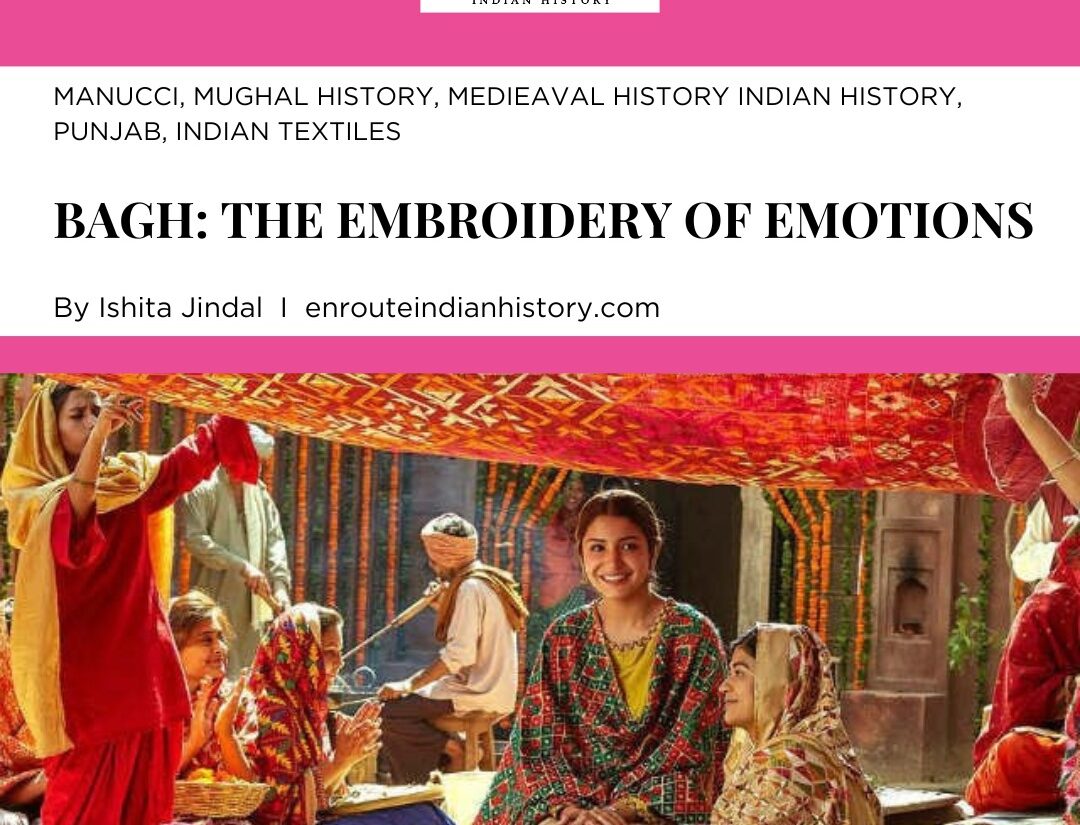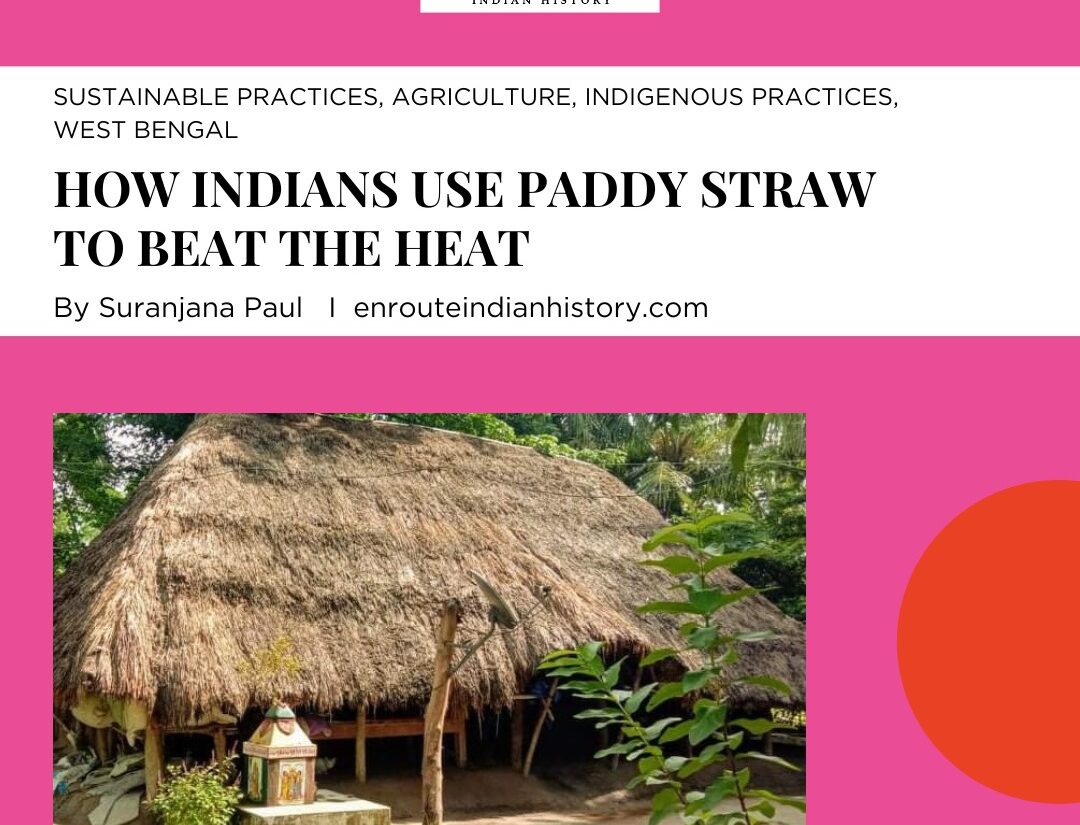
Introduction
Indian embroidery and Indian culture are renowned for their distinctiveness and creativity. Embroidery is a creative means of self-expression and a tool to enhance the aesthetics of objects. Stitching is a craft that may be seen as a kind of art in and of itself and helps to preserve cultural identity in rural and semi-urban settings. For those who value and admire them, these needlework items serve as a common link to the past and are frequently perceived as nostalgic artefacts.
Bagh is a type of Phulkari, which means “garden.” Embroidered cloth produced in the present-day Pakistani cities of Peshawar, Sialkot, Jhelum, Rawalpindi, and Hazara was referred to as “Bagh”. In contrast to Bagh, where the fabric is so densely stitched that the silk threads cover nearly the whole surface, Phulkari cloth is adorned with embroidery, allowing the base to be seen. Special ceremonial occasions are the intended use for bagh.
In the words of Bana Bhatt, who wrote “Harishcharitra” in the seventh century A.D., “some individuals were embroidering leaves and flowers in the fabric from the reverse side.” Because Phulkari and Bagh’s methods involve working on the reverse side of the cloth, this description has similarities to their methods. It was completed without the use of any tracing, drawing, pattern, or design, using an ordinary darn stitch needle. In technical terms, it’s a design created with “dhabh-taropa” (dorn stitch) in “pat” (silk floss) on “khaddar” (handspun cotton cloth). The pat is called “Suchcha Dhaga” (pure thread). It is marketed as “lachi” or “gutti,” and due to its high cost, each tola—a customary South Asian unit of mass—is sold separately.
An item of fabric, or wrap, was sewed together in two or three sections to create a “chadar.” The coarsely woven, loosely spun Khaddar is incredibly robust and long-lasting. The fabric’s base colour was consistently “Nabhi,” a shade of red, which complemented all other colors well. At the end of each piece of fabric was the name of a family member before it was sent to “Rang-rez” (the dyer).
During Lavan, brides also wear Bagh Phulkari around their shoulders (a sacred discourse of Guru Granth Sahib). The hand-spun fabric (khaddar), which shimmers when the bride walks, is sewn on using silk thread. The primary fabric colour, red, was primarily utilised to represent wealth, love, passion, desire, and excitement. The colour yellow, as well as its many variations, is often used for Bagh, a sign of joy, vitality, prosperity, and fertility. Orange is a hue that inspires amazement, happiness, and inventiveness. It also has a magical impact on the psyche. The colour green is associated with purity, harmony, freshness, nature, and cleanliness. White is a colour associated with simplicity, honesty, purity, and tranquillity. It was employed for a unique variety of Bagh base cloth known as “Thirma.”
Their daily activities, possessions, beliefs, and creative abilities are all shown in the designs and patterns. Geometric patterns like triangles, squares, and directional vertical and horizontal lines, as well as a variety of darn stitches in vivid hues including pink, blue, red, green, and golden were utilised to create Bagh. Phulkari and Bagh were often associated with the flowers Genda (marigold), Surajmukhi (sun flower), Motia (jasmine), and Kol (lotus flower). The Mughals are shown with other gardens in Shalimar, Charbagh, and Chaurasia Bagh. Asharfi (mohur, or gold coin) Bagh was the name given to a bagh that was embroidered with a red and yellow flower. Playing cards inspired other themes, such as “Ike,” or the ace of diamond design. There were also designs representing the sun, shadow, Dhoop Chhaon, waves, Patedar, stripes, Chand, the moon, Patang, the kite, Saru, the cypress tree, Pachranga, or five colors, Satranga, or seven colors, Dariya, or river, and Shisha, or mirror.

(Source: https://i.ndtvimg.com/i/2017-03/phillauri_640x480_81490517110.jpg)
Punjabi ladies formed a group known as “Trijan” to sing together while working on a Phulkari. Here are some poems about Bagh:
Utte phulkari, main rahandi kuwari,
Sassu put perdes nu toriya aye.
Kadhana a Bagh, sassu suti aye jag,
Sassu put perdes nu toriya aye.
Tandh nahi pani, meri ayhal jawani,
Sassu put perdes nu toriya aye.
Chamba, rawail, sassu bichade mail,
Sassu put perdes nu toriya aye.
Shrouded in a phulkari, I regret not staying as a maid. Her son has been sent abroad by my mother-in-law! Oh, mother-in-law, get up! An entire “Bagh” awaits stitching! Her son has been sent abroad by my mother-in-law! Look at my youth! O, I will not work a stitch! Her son has been sent abroad by my mother-in-law! Let the divided meet, mother-in-law, Jasmine, and Morning Glory! Why did you ever send him to a foreign land?
Eastern Punjab has a far more intricate and golden pat on its embroidered baghs. Western Punjab’s baghs were incredibly vibrant. Vari is the term used to describe the attire and jewels that the bride’s relatives gave her. Bagh, a representation of fertility whereby fresh life blossoms into a garden full of beautiful flowers, was embroidered by the groom’s grandmother and given to the bride. The first residence of the newlyweds is referred to as Vari da Bagh. This shawl’s pattern is arranged such that, despite one side having a lot of embroidery, that side only has one design unit. A fresh individual entering a new group of people in her life is symbolised by the design’s methodical split. It was traditionally made on khaddar that was red and orange with golden and orange pat. Three segments, each with three sizes of concentric diamonds, can be found in really good specimens. The outermost portion represented the year, the subsequent one the city, and the final one the home of a family.

(Source: https://phulkariembroidery.files.wordpress.com/2017/02/vari-da-bagh.jpg)
Bawan, which translates to “fifty-two,” refers to the division of the foundation fabric into fifty-two compartments with various geometric designs in Bawan Bagh. These boxes were all embroidered with various brightly coloured designs. It demonstrates the adaptable skill and inventiveness of women. One of the most intricate types, Bawan Bagh predicts the occurrence of difficult circumstances in a person’s life in an impromptu manner.

(Source: https://advayatales.files.wordpress.com/2016/05/bawan-bagh.jpg)
The Kaudi Bagh design included chains of tiny white squares that symbolised stylized cowries. The shells resemble the genitalia of females. Women who wanted to become more fertile frequently wore Kaudi Bagh.

(Source: https://i.pinimg.com/236x/fa/53/37/fa5337068f2ad9d6025a9d81fb16ef0e.jpg)
Women typically utilise Satranga Bagh for special occasions like childbirth, engagements, and marriage ceremonies. The bagh is heavily embellished with zigzag designs that evoke movement and are modelled after the rainbow’s seven natural hues. Panchranga Bagh is also embellished with chevrons in five distinct colours.

(Source: https://mapacademy.io/wp-content/uploads/1970/01/bagh.jpg)
A unique kind of three-cornered shawl known as a “ghunghat bagh” is used by brides to draw veils, or “ghunghat,” when they are among the old. The needlework is done in multicoloured designs and golden yellow triangle patches.

(Source: https://www.researchgate.net/publication/359245678/figure/fig6/AS:1133991612690432@1647376077366/Phulkari-Ghunghat-bagh-Source-https-imagesappgoogl-Eg1QD1QSkziWjm6B9-Accessed.jpg)
It is common to see Meenakari Bagh or Ikka Bagh embroidered with gold and white pat. Little multicoloured lozenges that symbolise meenakari (enamel art) or diamond shapes like a deck of cards are used to embellish it.

(Source: https://www.researchgate.net/publication/359245678/figure/fig6/AS:1133991612690432@1647376077366/Phulkari-Ghunghat-bagh-Source-https-imagesappgoogl-Eg1QD1QSkziWjm6B9-Accessed.jpg)
Rolling pin rows are a feature of Velanian da Bagh’s design, which is modelled after a kitchen device called a velan. Sometimes, little circular lozenges or successive rows of zigzag lines are used to insert the rolling pins, creating the appearance or form of a rolling pin.

(Source: https://www.rugrabbit.com/sites/default/files/imagecache/big/gaurav_kumar/37-2022/more_images/img_0913.jpg)
Popular in eastern Punjab is Surajmukhi, also known as Sunflower Bagh. This bagh is decorated in geometric patterns made of lozenges. Three little lozenges are stacked diagonally in each composite lozenge. These lozenges have a second, smaller lozenge in the middle, and the dark hue highlights the shape. Double running stitch is used to outline the larger, outermost lozenge.
The literal translation of Darshan Dwar is “a gate from where one can see the god.” This style of bagh was stitched by someone who wanted to thank God in a religious setting after having a desire granted. It was consistently stitched on a crimson background fabric. For Darshan Bagh, human figures, plants, animals, birds, and floral patterns were frequently employed.
Bagh embroidery is an excellent example of Indian workmanship’s creative talent and rich cultural heritage. Its intricate designs and vibrant colours, which have their origins in ancient traditions, depict stories of spirituality, wealth, and love. Bagh is more than simple ornamentation; it’s a way to express ethnic identity and preserve familial ties. It mimics the beliefs, manner of life, and innovation of earlier generations through its patterns and metaphors. As it adorns brides during sacred ceremonies and develops into a prized part of family heirlooms, bagh embroidery continues to weave together the threads of innovation and tradition, ensuring its history endures through the years.
References
Beste Michael. (n.d.). “Hopes and Dreams-Phulkari and Bagh Embroideries of Punjab”,. Hali Magazine 2000.
Kaur, A., & Kallan, A. (2018). The Threads of Emotions- Phulkari. International Journal of Trend in Scientific Research and Development, Volume-2(Issue-4), 583–590. https://doi.org/10.31142/ijtsrd12978
Kaur, R., & Gupta, I. D. (2014). Phulkari and Bagh Folk Art of Punjab: A study of changing designs from traditional to contemporary time. American International Journal of Research in Humanities, Arts and Social Sciences. http://iasir.net/AIJRHASSpapers/AIJRHASS14-118.pdf
Sawant, J., Guru, R., Kulkarni, S., & Yadav, P. (2023). INDIAN NORTHERN REGION OLD HERITAGE HAND EMBROIDERY MANUFACTURING TECHNIQUES. ShodhKosh: Journal of Visual and Performing Arts, 4(2). https://doi.org/10.29121/shodhkosh.v4.i2.2023.377
Wardah Naeem Bukhari. (n.d.). The Embroidery of Emotions-Phulkari’s Bagh of Punjab.
- May 15, 2024
- 6 Min Read























